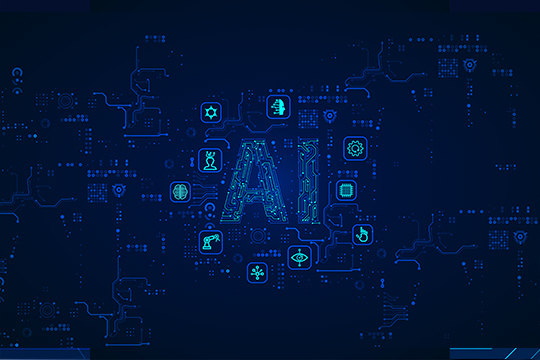Introduction To IaC Security Risks
This article delves into the intricacies of Infrastructure as Code (IaC), highlighting its definition and advantages, while primarily focusing on IaC security risks. It aims to provide a transparent overview of the existing security challenges associated with IaC, coupled with strategic recommendations to enhance security when implementing IaC solutions. The core objective is to equip readers with a thorough understanding of IaC’s security landscape, ensuring informed and secure utilization of IaC in technology infrastructures.
What is Infrastructure as Code (IaC)
Infrastructure as Code (IaC) is a practice used in cloud computing, on-premise environments and software engineering that leverages automation to manage and provision infrastructure resources using code rather than manual jobs. IaC allows for the deployments of infrastructure components such as servers, storage, networks and other resources using code that specifies versions and order of installation.
Importance of IaC in modern IT infrastructure management
Infrastructure as Code (IaC) plays a crucial role in modern IT infrastructure management for several reasons. According to the 2023 Thales Data Threat Report, 55% of organizations who experienced a data breach have identified their main cause as “human error”. IaC can play a pivotal role in reducing the need of human configuration by using machine-readable definition files to manage and provision resources.
This article will begin by discussing the definition/benefits of infrastructure as code, the security fundamentals of IaC, and the most common IaC security risks. The overall purpose of this paper is to be transparent about the current security risks of using IaC while giving recommendations for using IaC in the most secure manner.
Overview of Infrastructure as Code (IaC)
Definition and principles of IaC
Infrastructure as Code is a practice in software engineering and system administration where infrastructure and provisioning of resources are managed and configured using code and automation tools, rather than manual processes. This code is typically stored in version control systems and can be easily shared, modified, and replicated. Some of the main principles of IaC include declarative configuration, Modularity/Reusability, disposable systems, change management and security.
Key benefits of IaC
In Infrastructure as Code (IaC), a declarative configuration is an approach to defining infrastructure in which you specify the desired end state of your infrastructure components without specifying the step-by-step procedures to reach that state. It focuses on “what” the desired configuration should be rather than “how” to achieve it. The key benefit of a declarative configuration setup is promoting simplicity, reliability, and scalability. It makes it easier to understand and communicate infrastructure configurations while supporting the need for more automation and orchestration of infrastructure changes.
The second principle of Infrastructure as Code (IaC) to discuss is Modularity/Reusability. The principle of Modularity and Reusability in IaC emphasizes the design of infrastructure to be more maintainable and free of dependency failures. Another benefit is the improved simplicity of troubleshooting and collaboration. This also heavily relates to the benefit of using disposable systems and dynamic infrastructure when choosing to use IaC for configuration. This makes systems more fault tolerant and capable of surviving major server state changes while keeping the applications running for consumers. In the cloud age, it’s absolutely crucial to ensure your software and development environments are capable of reliably running diverse hardware.
The final principle of Infrastructure as Code (IaC) that stands out is security. While the use of IaC in the cloud industry has mainly been for automation purposes, IaC can be a powerful tool to increase your company’s cloud security posture. Some of the use cases of IaC when it comes to improving security are streamlining compliance/auditing, enforcing consistency, and accelerating incident response.
IaC can provide an expansive audit trail and easy tracking of company regulation changes. A secure system relies on consistency as a fundamental aspect of IT. IaC ensures that configuration drift doesn’t occur due to updates and patches, which can avoid a variety of security vulnerabilities.
IaC Security Fundamentals
The role of security in IaC
IaC is responsible for configuring entire development/production environments which requires a high level of permissions. This high level of permission comes with a massive security risk and the responsibility to install and configure the latest libraries/dependencies/plugins that are free of open vulnerabilities. Security plays many roles in IaC one being to ensure that the latest software is installed and the amount of open ports a system container is significantly reduced to decrease the attack surfaces.
Key security objectives in IaC environments
While IaC aims to automate processes for speed and efficiency purposes, IaC can also play a critical role in security. Objectives such as identifying environmental drift, asset inventory, securing secrets, and activating alert notifications. IaC also can automate security testing, vulnerability management, and automating access control/ least privilege implementation.
Common IaC Security Risks
IaC template configuration
IaC templates play a pivotal role in streamlining the deployment of environments, utilizing base images as a foundation for the entire build. Developers must adhere to rigorous security measures to ensure the integrity of these base images, emphasizing the importance of securing and hardening supply chains. It is essential that these images originate from trusted registries committed to pushing regular patches and updates. Moreover, adopting a Zero Trust approach for endpoints becomes imperative in the broader context of security. This entails treating every user and device as potentially untrusted, regardless of their location or network connection. This stringent security model ensures that each component, be it software or hardware, undergoes scrutiny and validation from trusted sources during installation, updates, and patches. By enforcing a Zero Trust architecture and relying on trusted sources for all elements of the deployment lifecycle, organizations can significantly enhance their resilience against cyber threats and bolster the overall security posture of their environments.
Another security concern prevalent in the IaC (Infrastructure as Code) landscape is the susceptibility of hard-coded credentials/IP/customer information within templates. This practice poses a significant risk, as attackers may exploit such vulnerabilities to access and manipulate internal systems. To mitigate this threat, it is imperative to adopt robust security measures such as implementing dynamic secret rotation and utilizing secure credential storage solutions. Incorporating security technologies like HashiCorp Vault and CyberArk, alongside secret management services such as AWS Secrets Manager and Microsoft Azure Key Vault, enhances the overall resilience of the infrastructure by safeguarding sensitive information and restricting access to authorized entities during the deployment process.
Data Exposure
The configuration of cloud storage infrastructure is extremely crucial to protect the confidentiality of customer information. When an engineer is configuring databases or cloud storage services such as Amazon S3 or Azure Blob Storage, they must ensure that encryption is enabled to protect the contents. This would also apply to data both in transit and at rest since attackers may implement man-in-the-middle techniques. We discuss Zero-trust architectures on our Oteemo Blog. Encryption is just one aspect of ensuring that cloud storage/database configuration is secure, engineers must ensure that storage infrastructure provisioning is automated to remove data exposure risks.
Secrets Management
Secret management in IaC introduces unique security risks that must be carefully addressed. One significant concern is the inadvertent exposure of sensitive credentials and secrets in code repositories. With IaC, it’s common to store configuration files, including secrets and API keys, alongside infrastructure code. If not managed correctly, this can lead to accidental leaks and unauthorized access. Additionally, version control systems can pose risks as historical commits may contain secrets, potentially exposing them to malicious actors. Proper access control, robust encryption, and the use of specialized secret management tools are essential to mitigate these risks when implementing IaC. A good pairing with IaC would also be secret scanning tools and pipelines to enforce good change management with IaC. To summarize, A robust secret management protocol and secret scanning tools would ensure sensitive data is protected and threat actors cannot comprise secrets.
IaC Security Risks Conclusion
Key Points of IaC in Modern IT Infrastructure
In this paper, we discussed the fundamental principles of IaC, highlighting its declarative nature, modularity, reusability, and its role in enhancing security. We also delved into the critical benefits of IaC, such as simplicity, scalability, and security improvements. Moreover, we explored the significance of IaC in modern IT infrastructure management, particularly in mitigating human error.
The importance of proactive IaC security
Proactive IaC security is essential for maintaining the integrity and security of your infrastructure. While IaC offers numerous advantages, it also introduces unique security challenges. These challenges include ensuring that IaC templates are based on trusted images, avoiding hard-coded credentials and sensitive information, safeguarding against data exposure, and effectively managing secrets. It is crucial to recognize that IaC grants substantial permissions, making it an attractive target for attackers. Therefore, securing your IaC environment should be a top priority.
Encouraging organizations to prioritize IaC security in their practices
In today’s digital landscape, organizations must prioritize IaC security to protect their data and infrastructure effectively. Implementing best practices, such as automating infrastructure provisioning, enabling encryption, and using specialized secret management tools, is essential to mitigate security risks associated with IaC. Additionally, it is vital to establish rigorous access control and encryption protocols to safeguard sensitive information stored alongside infrastructure code in version control systems.
By prioritizing IaC security, organizations can streamline compliance and auditing, maintain consistency in configurations, and enhance their incident response capabilities. Furthermore, this proactive approach will help mitigate the risk of data breaches caused by security vulnerabilities and human errors.
Resources cited:
https://www.xenonstack.com/insights/principles-of-iac
Top 5 Infrastructure as Code (IaC) Security Challenges (trendmicro.com)
5 More Security Risks for Infrastructure-as-Code – The New Stack









0 Comments